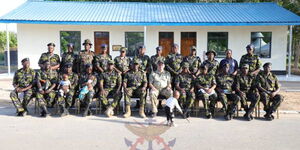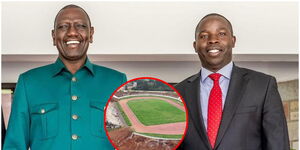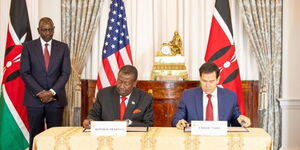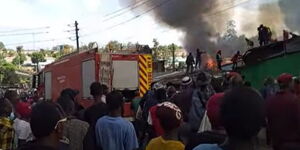If you have driven on roads across Kenya—whether on highways or rural stretches—you have likely noticed features such as rail guards along the edges, sudden curves, oddly placed centre barriers, or unusual junctions. At first glance, these elements may appear random, but they are not.
Most road designs are the result of extensive engineering, safety studies, and traffic behaviour analysis. In this article, we break down the logic behind the road layouts you see every day but rarely stop to question.
Curved Roads
Roads are often curved intentionally to reduce vehicle speeds in high-risk zones such as hillsides, blind spots, or sharp turns. Straight roads can encourage speeding, which increases accident risks. Curves act as natural speed reducers and keep drivers alert.
Contrary to popular belief, curved roads are often safer than long straight stretches. In Kenya, sections of the Nakuru–Eldoret highway and the Kericho–Bomet and Kapsabet-Nandi Hills-Chemelil routes are known for their sharp curves and meandering.
On winding roads, drivers are more alert and cautious. Straight roads can lull drivers into a false sense of security, reducing their attentiveness. Curved designs keep drivers engaged and give them more time to react to what’s ahead, especially on roads with limited visibility.
Guard Rails and Concrete Barriers
In 2018, the Kenyan government installed concrete barriers along a 21km stretch of the Nakuru-Eldoret highway in Salgaa, at a cost of Ksh500 million, to address a high accident rate. This barrier, which separates opposing lanes of traffic, has helped to significantly reduce the number of accidents on that section of the road.
Well, have you ever paused and asked why the concrete barriers are never high, even on elevated sections of the road, such as the Nairobi Expressway? A shorter height design ensures the vehicle's momentum is absorbed and redirected without allowing the car to ride over the rail or be trapped beneath the rail in case of an accident. Higher, tapering ends increase that risk, especially at high speeds.
When a vehicle hits the barrier at a shallow angle, the sloped lower part of the barrier helps to lift the vehicle slightly and gently guide it back into its lane. This limits the vehicle’s rotation and helps prevent it from flipping.
Guard rails are primarily installed to keep vehicles from veering off the road into dangerous areas such as ravines, embankments, rivers, or pedestrian zones. For example, along sections of the Nairobi–Nakuru Highway near escarpments, guard rails are used to prevent fatal rollovers.
Roundabouts
Roundabouts are designed to minimise conflict points and reduce the chances of serious collisions. Unlike traffic lights that cause delays, roundabouts promote continuous movement, especially at moderately busy intersections. A good example is the Globe Roundabout in Nairobi, which helps ensure continuous flow of traffic.
Speed Bumps and Rumble Strips
These are installed to slow down drivers in high-risk areas such as school zones, hospitals, or residential estates. Rumble strips - those slightly raised, often uncomfortable lines across the road - serve as tactile and audible warnings to alert drivers before sharp curves, pedestrian crossings, or dangerous sections.
Slip Roads and Service Lanes
Slip roads and service lanes help manage traffic entering or exiting major highways.
Slip roads are short roadways designed for vehicles to safely enter or exit a main road like highway whereas service lanes run parallel to a main road and provide access to properties and local traffic while minimizing disruption to the main road's flow.
In Kenya, the Thika Superhighway is a prime example, where slip roads and service lanes allow vehicles to slow down, turn, or accelerate without disrupting the main traffic flow. They also improve access to businesses and residential areas along busy corridors.
Flyovers and Interchanges
Structures such as flyovers and interchanges are built to handle high volumes of intersecting traffic while maintaining smooth flow. For example, the Gitaru interchange on the Southern Bypass reduces congestion and lowers the risk of accidents by separating crossing traffic streams.
Interchanges are often placed near growing towns, business parks, or commercial centres to support access and economic activity while keeping through-traffic moving.
Zebra Crossings and Pedestrian Bridges
Zebra crossings are common in low-speed areas and give pedestrians the right of way. In contrast, pedestrian footbridges are used on major roads and highways where stopping vehicles would be dangerous or impractical. They are often placed just after speed bumps or rumble strips to encourage safer driver behaviour.
One-Way Streets
In dense urban areas, one-way streets are used to streamline movement, ease congestion, and make better use of narrow roads. They allow planners to manage traffic more efficiently while reducing the chances of head-on collisions.












